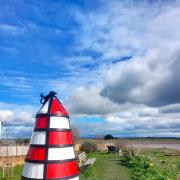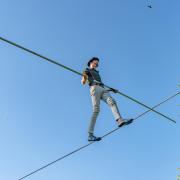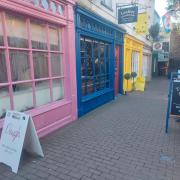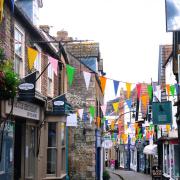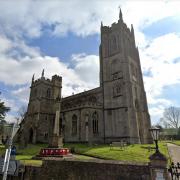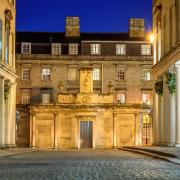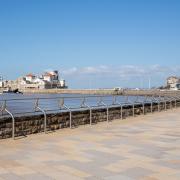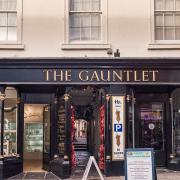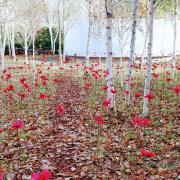Somerset Life takes you on an exploration of fact, fiction, and a few tall tales in the Quantocks

Outstanding Natural Beauty
Following the end of World War Two in 1945, the government was striving to plan a positive post-war future for Britain. This included the preservation of certain areas of natural beauty not large or wild enough to be classified as National Parks. In 1949, the National Parks Commission was empowered to designate any area in England or Wales that was not a National Park as an Area of Outstanding Natural Beauty (AONB). On 9 May 1956, Gower in Wales became Britain’s first AONB and, in the same year, the Quantock Hills was England’s first. The Quantock Hills cover 99sqkm from the vale of Taunton Deane to the Bristol Channel coast.
The Gurt Wurm
Legend has it that in Shervage Wood near Holford there lived a dragon that roamed at night, eating any living creature it found. One day in late September, woodcutter Joe Tottle from Stogumber visited widow Maggie Conibeer, who made wonderful whortleberry tarts, at her cottage in Crowcombe.
They agreed that, in exchange for a share of the profits, Joe would go into the woods to gather whortleberries for Maggie and chop some wood, to sell at Bridgwater Fair. In the woods, Joe rested on a large fallen log which started to writhe underneath him. He leapt up and split the ‘log’ in two with three blows of his axe. The howls of pain were heard all over the Quantocks as the two halves of the dying dragon headed off in different directions, one half ending up in Kingston St Mary and the other half in Bilbrook near Minehead. And some say that, before the dragon died, it laid an egg in Shervage Wood which has yet to hatch…

Halsway Manor in Bicknoller has, since 1965, been the home of the only permanent folk music centre in England. The manor was mentioned in the Domesday Book of 1086 and its antiquity has spawned several myths and legends. It is said the building was once the hunting lodge of Cardinal Henry Beaufort (1375-1447), at one time Lord Chancellor under Henry IV, who attended the trial and execution of Joan of Arc in 1431. The site of the manor’s former chapel, later an apple store, is where the ghost of the bishop was seen, enjoying pelting people with apples.

Andrew Crosse (1784-1855), scientist, philosopher and poet, lived at Fyne Court in Broomfield all of his life. He became fascinated by the developing understanding of electricity and practised experiments in his garden, trying to harness its power during stormy weather. Known by nervous locals as the ‘Wizard of Broomfield’ or ‘Thunder and Lightning Man’, Crosse passed an electric current through volcanic rock, from which mites started to appear, leading to the accusation that he was trying to play God and create life. It is claimed Mary and Percy Bysshe Shelley attended one of his lectures and this inspired Mary to write Frankenstein.
From Fyne Court to Milton Lodge Gardens, discover 25 of Somerset’s prettiest gardens to visit here.

The Coleridge Way
Coleridge Cottage in Nether Stowey was the home of the poet Samuel Taylor Coleridge for three years from 1797. As one of the leaders of the Romantic Movement, Coleridge has become immortalised by famous poems such as Kubla Khan and The Rime of the Ancient Mariner, both written in Somerset. With his friend, William Wordsworth, Coleridge would wander the paths of the Quantock Hills, drawing inspiration from the landscape.
The Coleridge Way is a walking route of 51 miles that starts in Nether Stowey and crosses the Quantocks into Exmoor. Launched in 2005, the route is designed to lead walkers in the footsteps of Coleridge and celebrate the county’s connection with the poet.

The Holy Wells
Holy wells are springs, ponds or small lakes that were the focus of religious activity, many originally pagan sites that became Christianised later. In the Quantocks, several have been documented, most comprehensively in Ruth Tongue’s book Somerset Folklore (1965), in which she recorded fascinating tales about the wells.
In Crowcombe, there were two: ‘A pixy well down near the farm’ and ‘A wishing well somewhere down Roebuck’.In Holford, another oral tradition surrounds ‘The Witches Well at Padlestone’, in which ‘a gifted man said the right words and threw salt in’, which drove away the witches who had inhabited the site. In Nether Stowey existed a blind well. Tradition reports that two brothers parted at the well and promised to meet there again in seven years time. Both were blinded during those seven years but, when they returned and heard each other’s voice, both ran forward and fell into the spring and it washed their sight back again.

Cothelstone Hill
Rising to 332 metres above sea level, Cothelstone Hill is the highest point in the Quantock Hills and commands stunning views in all directions. The antiquarian John Collinson noted in 1791 that ‘from this delightful spot, the eye commands 14 counties and, with a glass on a clear day, 150 churches’. Research has shown our forebears enjoyed Cothelstone Hill too.
In June 2015, the South West Heritage Trust, Quantock Hills AONB Service and the Hinkley Point Archaeology Outreach team undertook an excavation on the hill and uncovered evidence of Neolithic occupation in the form of a variety of flint tools and arrowheads. This information supplements previously known evidence of Bronze Age barrows, an Iron Age dyke, medieval rabbit warrens and an 18th century folly.

The Murder of Jane Walford
The Quantocks have always been a peaceful and law-abiding area but there is one grisly tale from the region. The body of Jane Walford, a bride of only three weeks, was discovered at the side of the road in the village of Dodington, on 7 July 1789. Her husband John Walford of Over Stowey beat her and then cut her throat after a visit to The Castle of Comfort. He was arrested, imprisoned and committed for trial at the County Assizes at Bridgwater on August 18. He was found guilty and sentenced to be hanged.
On August 20 he was taken to a temporary gibbet on the hillside above Dodington where, after a full confession, he was hanged and his body left for a year and a day. The remains were then cut down and buried 10 feet under the gibbet. The place of the execution is still known as Walford’s Gibbet.
This article was updated by Martha Griffiths in June 2021.







